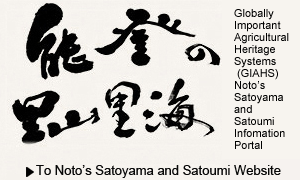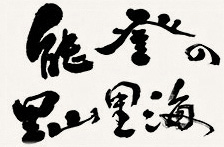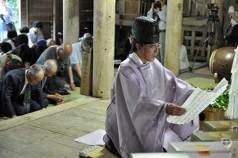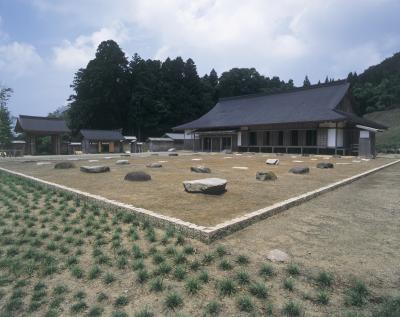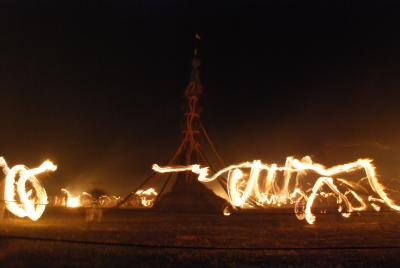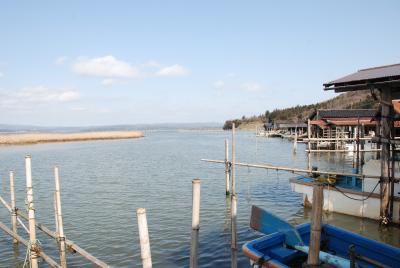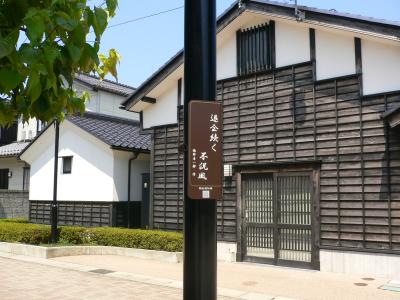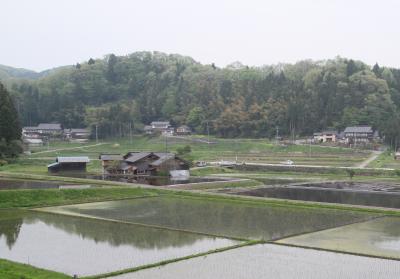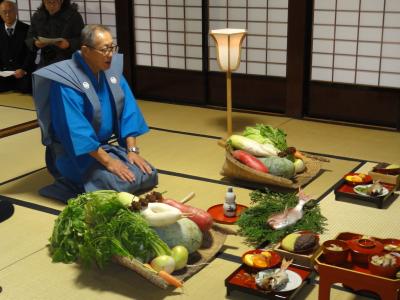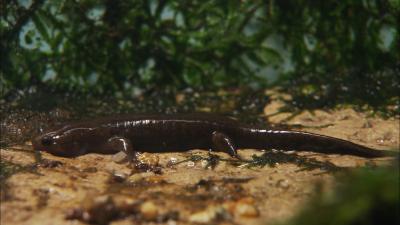
Name
Mt. Sekidô Opening Festival
Address
Mt. Sekidô, Nakanoto Town
Category
Festival
Class
Custom
Age
20th century~21th century
Designation
Mt. Sekidô: National Historic Site (October 1978) Isurugihiko Shrine Main Hall and Hall of Worship memorial tablet (October 1967), former temple building (one) (January 1975): Ishikawa Prefecture Tangible Cultural Assets
Comment
Mt. Sekidô is a 564m-high mountain in the southernmost part of Noto. It used to be worshipped as “Isurugi-san” and “Sekidô-san”. According to “Sekidô-san shin-engi” (the history of Mt. Sekidô), in 717, Priest Daichô climbed Mt. Sekidô after opening Mt. Hakusan, and attained the enlightenment of Buddha. This festival is held on Daichô’s memorial day, July 7, to commemorate his virtue. It is also called Mitama Festival. In the olden days, Daichô’s followers gathered at his burial site, made a fire-offering, recited the sutra, then moved to the Ômiyabô main temple, and finally had sacred sake and sacred food at Hôchi-in Temple. This festival was managed by the Hochi family who succeeded Hôchi-in Temple until the Meiji period. However, since 1921, it has been managed by the director of the Mt. Sekidô area at Isuruhigiko Shrine. Participants offer water from Iwashiga-ike Pond near the former site of Kaisandô Temple, and take it home after the purification ceremony. It is said that the water will not decay and will retain its flavor for a few months. From Mt. Sekidô, you can see the Tateyama mountain range and the Japan Alps over Toyama Gulf to the east, the Hakusan mountain range to the south, the Sea of Japan to the west, and Nanao Gulf, Noto Island and Noto Peninsula to the north. This mountain itself used to be called Tenpyô-ji Temple; Isurugihiko Shrine and 360 temples including the Ômiyabo main temple were on the mountain. It is now dotted with many foundation stones and relics of the temples, and has been designated as a National Historic Site.
Nakanoto Town Tangible Cultural Assets: Ômiyabo stone pagoda copestone (Sep. 1960), mound stone pagodas at the Gochi-in ruins (April 1968), ascetic hall (May 1988), Isurugihiko Shrine, silk colored drawing of 3,000 Buddhas (Sep. 1966), Isurugihiko Shrine, old paper colored drawing of Mt. Sekidô Temple (Jan. 1986), Isurugihiko Shrine, Kanbun paper colored drawing of Mt. Sekidô Temple (Jan. 1986), Isurugihiko Shrine, Genroku paper colored drawing of Mt. Sekidô (Jan. 1986), Isurugihiko Shrine, paper tint-colored drawing of Mt. Sekidô (Jan. 1986), Isurugihiko Shrine, silk colored Nirvana drawing (Mar. 1986), Isurugihiko Shrine, Mt. Sekidô Tenpyô-ji Temple (Jan. 1986), lacquered temple document box from Isurugihiko Shrine, old Mt. Sekidô Temple (Sep. 1960), document from Isurugihiko Shrine, new Mt. Sekidô temple (Sep. 1960), Isurugihiko Shrine document (Sep. 1960), Isurugihiko Shrine main hall and hall of worship memorial tablet (Sep. 1960)
Nakanoto Town Natural Monument: Chamaecyparis obutusa Endl. var.pendula Mast (April 1959)
Nakanoto Town Tangible Cultural Assets: Ômiyabo stone pagoda copestone (Sep. 1960), mound stone pagodas at the Gochi-in ruins (April 1968), ascetic hall (May 1988), Isurugihiko Shrine, silk colored drawing of 3,000 Buddhas (Sep. 1966), Isurugihiko Shrine, old paper colored drawing of Mt. Sekidô Temple (Jan. 1986), Isurugihiko Shrine, Kanbun paper colored drawing of Mt. Sekidô Temple (Jan. 1986), Isurugihiko Shrine, Genroku paper colored drawing of Mt. Sekidô (Jan. 1986), Isurugihiko Shrine, paper tint-colored drawing of Mt. Sekidô (Jan. 1986), Isurugihiko Shrine, silk colored Nirvana drawing (Mar. 1986), Isurugihiko Shrine, Mt. Sekidô Tenpyô-ji Temple (Jan. 1986), lacquered temple document box from Isurugihiko Shrine, old Mt. Sekidô Temple (Sep. 1960), document from Isurugihiko Shrine, new Mt. Sekidô temple (Sep. 1960), Isurugihiko Shrine document (Sep. 1960), Isurugihiko Shrine main hall and hall of worship memorial tablet (Sep. 1960)
Nakanoto Town Natural Monument: Chamaecyparis obutusa Endl. var.pendula Mast (April 1959)
Material Link
Views
Access number:8631

